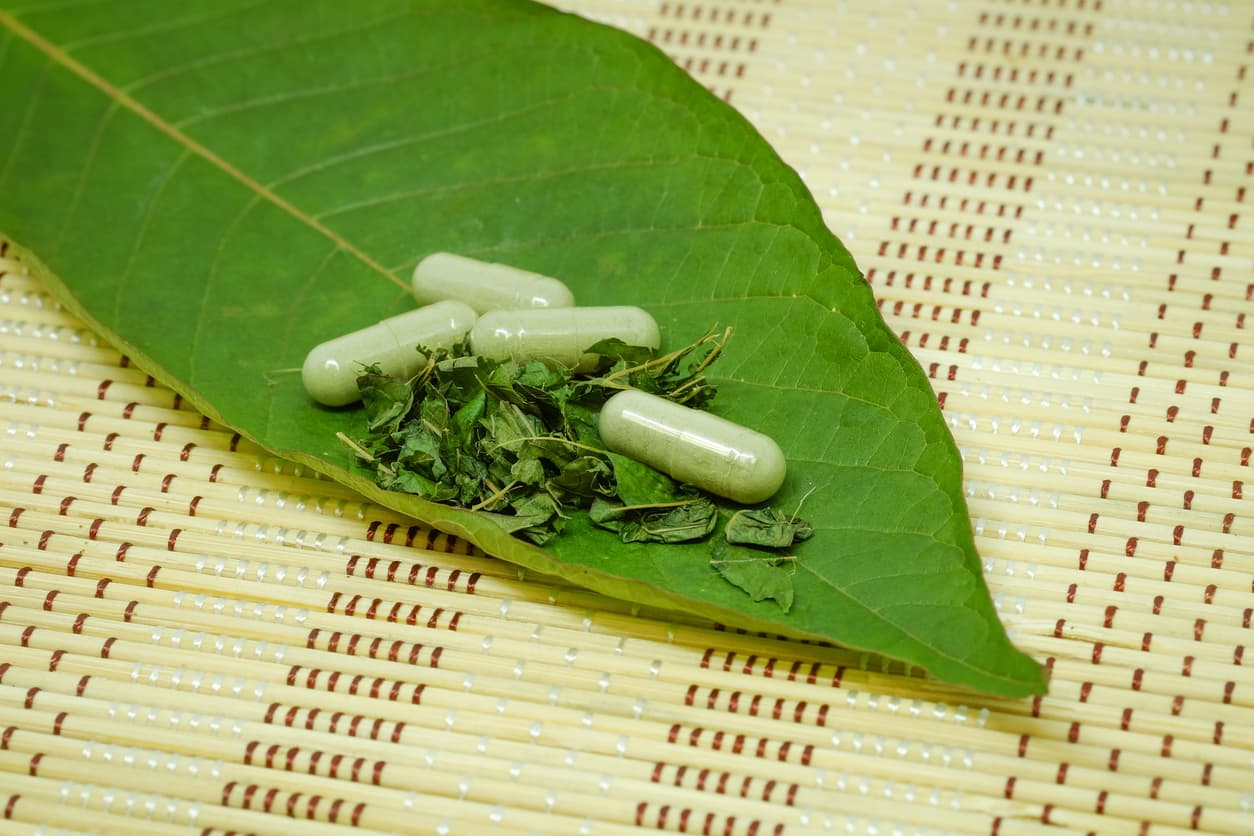
Kratom Use: Signs, Risks, & Getting Help
What Is Kratom?
In 2020, more than 2 million people in the U.S. reported using kratom within the last year.3 Although research into the health effects and safety of kratom is limited, several adverse effects associated with kratom use have been reported.1 Studies also suggest that people who use kratom regularly may experience mild to moderate withdrawal symptoms when they stop.1

Potential Risks of Kratom Use
While kratom may have potential medicinal uses, additional research is needed to better understand the effects of kratom use. For now, people who use kratom or are considering using kratom should know that there are no FDA-approved uses for the drug.8 The FDA warns against using kratom and any other products that contain mitragynine and 7-hydroxymitragynine.8
Kratom use can cause various cardiovascular, gastrointestinal, neuropsychiatric, and respiratory concerns, and has been linked to liver toxicity as well as a small number of deaths.1, 5 People have reported a variety of kratom side effects ranging from mild to severe.1
Mild effects of kratom may include:1, 9
- Constipation.
- Dizziness.
- Drowsiness.
- Dry mouth.
- Increased urination.
- Itching.
- Hair loss (with daily use).
- Nausea.
- Sweating.
Although rare, people have reported experiencing serious adverse effects associated with kratom use, including:1, 9
- Hypothyroidism.
- Liver issues (e.g., cholestasis, which is a buildup of bile in the liver).
- Heart issues (e.g., increased heart rate, high blood pressure).
- Lung issues (e.g., respiratory depression or slowed breathing).
- Confusion.
- Tremors.
- Seizures.
There is also concern about kratom use due to unregulated manufacturing and the risk of contamination.10 In 2018, there was a multistate outbreak of salmonella linked to kratom products.10
Signs of Kratom Misuse and Addiction
If you are concerned that someone you care about may be misusing or addicted to kratom, several signs could indicate that their use of the drug is becoming problematic. They may exhibit behavioral changes such as losing interest in previously enjoyed hobbies or activities. You may notice that they are experiencing problems at home, school, or work due to their substance use. They may begin to compulsively use the drug to simply feel normal.11
You may also notice symptoms related to kratom withdrawal when the drug is not being used. While Kratom withdrawal has not been extensively researched, some studies suggest that kratom use is associated with cravings, dependency, and withdrawal symptoms if a person tries to cut back or stop using the drug.1, 9
Kratom withdrawal symptoms may be similar, though generally milder, than those associated with other opioid withdrawal syndromes, including: 9
- Nervousness.
- Restlessness.
- Irritability.
- Drug cravings.
- Trouble sleeping.
- Body aches.
- Muscle spasms.
- Decreased appetite.
- Abdominal cramps.
- Nausea and vomiting.
- Diarrhea.
- Fever.
- Sweating.
- Watering eyes.
- Runny nose.
Getting Help for Kratom Use
If you believe that you or someone you love needs support for problematic kratom use, help is available. Several treatment options and settings may be helpful in cases of compulsive kratom use, including detox, inpatient rehab, and outpatient rehab programs.
There are also FDA-approved medications for opioid use disorder (MOUD) available, such as buprenorphine and methadone, that, unlike kratom, are known to be both safe and effective for managing the cravings and withdrawal symptoms associated with opioid addiction.1,12
If you’re ready to find addiction treatment options for yourself or a loved one, get started with our free nationwide rehab search tool. Find addiction treatment facilities that take insurance, rehabs that allow pets, outpatient rehab programs, and more.